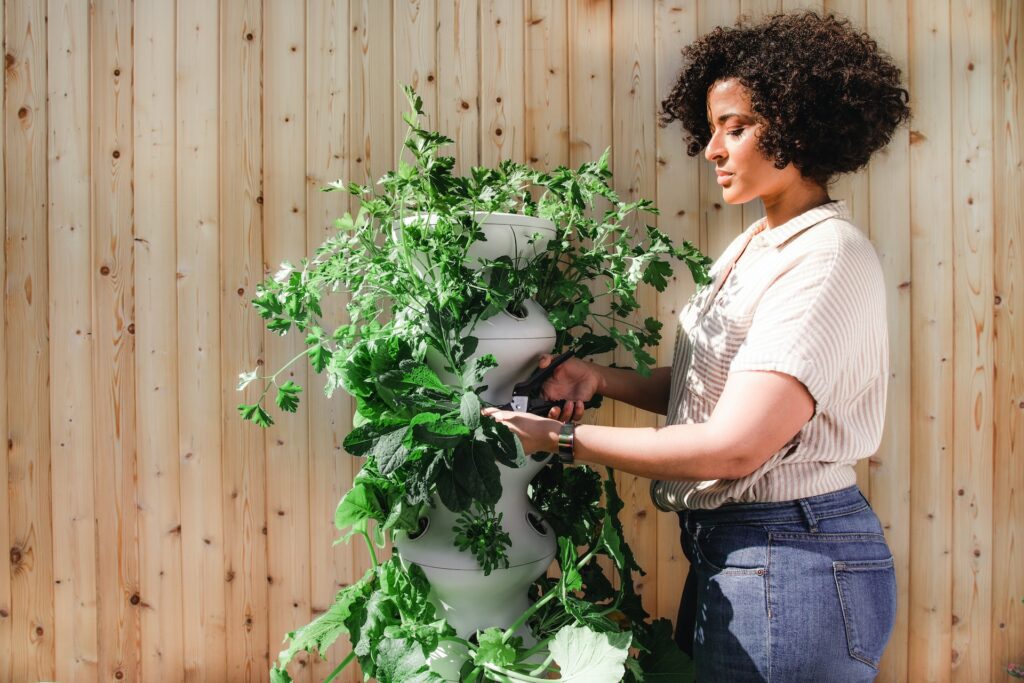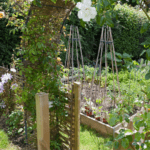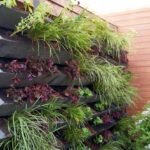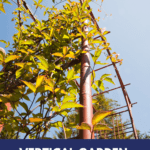June 23, 2023
Stylish, Space-saving Vertical Gardening at Home
Stylish, Space-saving Vertical Gardening at Home
The benefits of vertical gardening are plenty. Not only does growing vertically increase yields, many plants are healthier in a vertical set-up, too. With stems and leaves off the ground, leaf surfaces get more sun and the air circulation around your plants will be optimized, meaning your plants grow robustly and will be less susceptible to disease.
The best part of growing upwards? You can stand up while gardening! Goodbye, achy knees.
Vertical gardening continues to gain popularity as more and more people live in cities and apartments, and want to garden in smaller spaces. And if you have an outdoor space, a trellis or living wall can be a gorgeous addition.
Let’s check out some popular and creative vertical gardening techniques and tips on how to grow your own sky-high garden.
Trellis gardening
Probably the most common and definitely the simplest, lowest-effort vertical growing technique is trellis gardening. Trellising is an awesome option for people with a small yard or garden beds who want to grow big, bodacious plants in a tight spot. It’s also an incredibly versatile technique.
Trellis gardening means training plants that are rooted in soil (or a container on the ground) to grow on a support structure, which is usually staked into the soil near the base of the plant.
Trellises are typically made out of wood, metal, or even recycled material, and come in all varieties of shapes and sizes. Trellises can be tall or small, arched or straight, many-sided (pyramids and obelisks are popular trellis shapes) or simple. A trellis can be made simply from two upcycle wooden dowels and a stretch of chicken wire fencing. Just sure to build or select a trellis that is strong enough to support the weight of the plant.
Plus, trellises are simply gorgeous! They can help you create a curtained colorscape of blooming flowers or a tidy way to grow your magic beans up to the stars. In fact, many plants (both flowers and foliage plants) need to be trellised or “caged”, like tomatoes of all kinds, beans and peas, some types of cucumber, and grapes, of course.
Looking for more ways to help bees and butterflies? A trellis is a great spot for some pollinator plants.
As far as flowers go, a colorful trellis archway of drooping bougainvillea, roses, or wisteria is a classic garden dream. Trellises can also provide shade and privacy, making them a great addition to patios, decks, or balconies.
Tower Gardening

Tower gardening is a great option for those with limited space, as it allows you to grow a large number of plants in a small area. It involves growing plants in a tower or other vertical structure, typically with multiple tiers, each with a separate planting area.
The difference between trellis growing and tower growing is that your towered plants will be planted in sections of soil that is not in the ground. For example, a popular homemade tower garden technique is to stack a few all-purpose buckets atop one another, cut some holes in the sides and bottom, and fill the central structure with soil (don’t forget the plant food!). Then, a small plant with a small-ish root system like lettuce or strawberries is planted in the holes. Clever and space-saving! But as you can imagine, this technique takes a bit of effort, time, and handiwork.
There are as many ways to build a creative tower garden as there are clouds in the sky; they can be purchased pre-made or made at home using new or recycled materials.
No matter what tower garden container or materials you use, be sure to provide secure support for your structure! Soil, plants, and water get heavy.
Living Walls
Not so different from tower gardens are living walls, also called green walls (in fact, lots of people might call living walls a type of tower garden).
Living walls are just what they sound like! Similar to tower gardens, living walls are planters themselves: they’ve got plants growing right out of them! But unlike tower gardens, they tend to be bigger and are best used for decorative purposes. A living wall can add a beautiful, stylish touch to any indoor or outdoor space.
Sometimes you’ll hear living walls referred to simply by the plant or types of plants growing on them (for example, a succulent wall is a popular wedding or event decor piece). Living walls aren’t the best for growing harvest crops, since they provide almost no support for root systems and plants will grow entirely sideways out of a living wall.
Living walls can be one of the most creative vertical gardening techniques; they’re often made from materials like felt, foam, or wood, with lots of holes or pockets for plants. Like toward gardens, these are best for light-weight plants with shallow root systems.
They typically require a special watering system to ensure that the plants receive adequate water and nutrients, so they are also the most labor intensive kind of vertical gardening. A liquid plant food will be the easiest application option for a living wall or tower garden.
Grow for the stars!
Vertical gardening is an awesome way to maximize your growing space and add a decorative touch to your home or garden. Whether you have limited space or just want to try something new, vertical gardening is a fun and innovative way to grow plants.
Trellis gardening, tower gardening, and living walls are just a few ideas to get your started. When it comes to vertical gardening, the sky’s the limit.
Show us your True Organic Plants
#GrowWithTrue
www.trueorganic.earth




